A chef’s knife is more than just a tool—it’s an extension of the chef. Whether you’re prepping vegetables for a quick dinner or carving a roast for a holiday feast, the quality of your knife affects your efficiency, precision, and overall cooking experience. This comprehensive guide explores the anatomy of a chef knife, the intricacies of steel types, heat treatment, manufacturing methods, and how brands like Rebex are shaping the mid-tier knife market.
Understanding Knife Steel: The Heart of the Blade
Carbon Steel
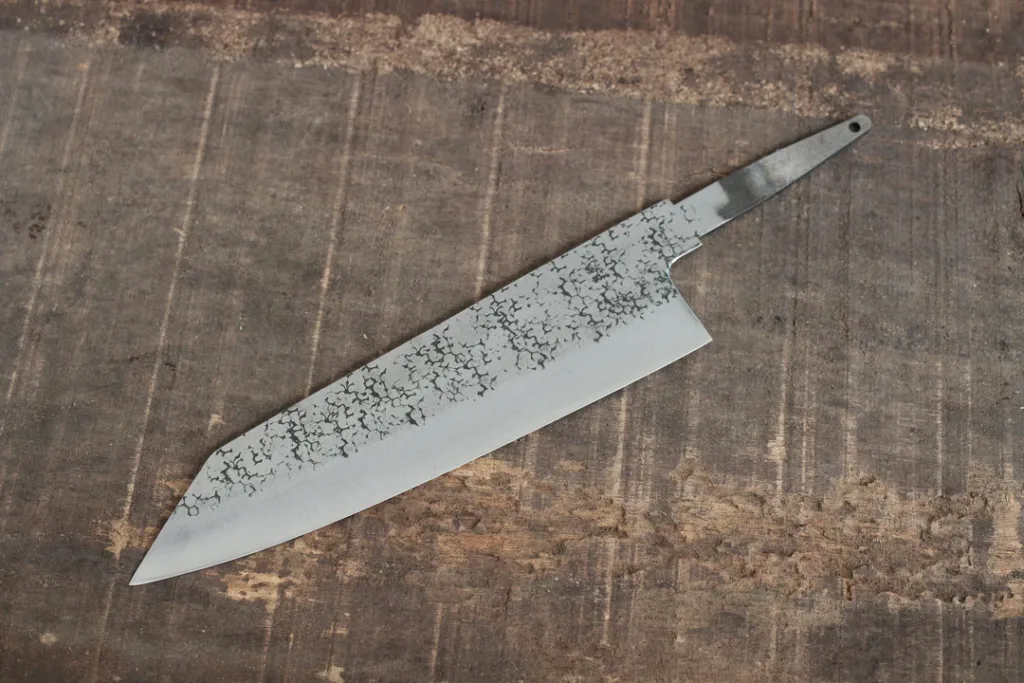
Renowned for its sharpness and edge retention, carbon steel contains 0.6–1.5% carbon. Popular types include:
- Aogami (Blue Paper Steel): Up to 63 HRC, excellent edge retention, but requires careful maintenance.
- Shirogami (White Paper Steel): Ultra-pure steel with fine grain for exceptional sharpness.
- 1095 or W-2: High-carbon steels known for toughness and utility.
Pros: Razor-sharp edges, easy to hone, great for professional chefs.
Cons: Prone to rust and requires regular oiling and drying.
Stainless Steel
With 12–17% chromium, stainless steel offers low-maintenance performance.
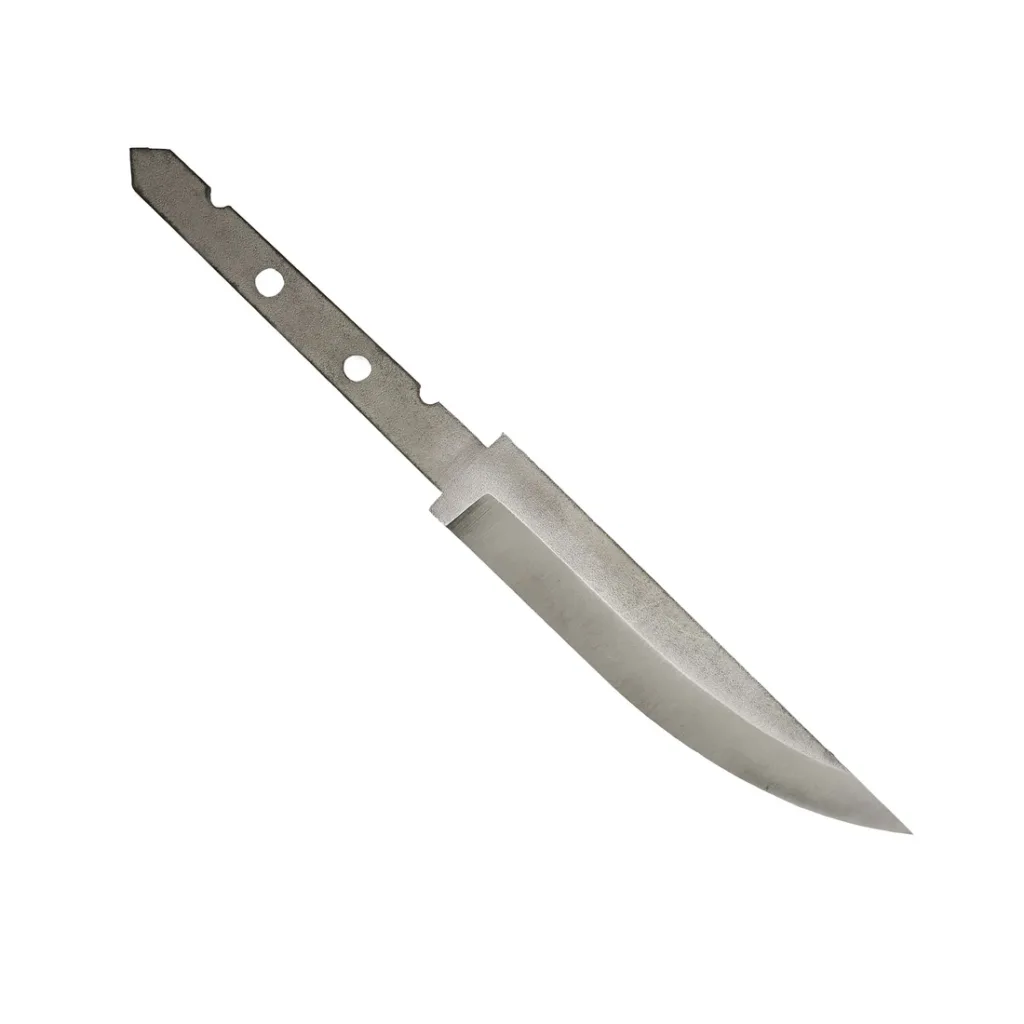
4116 Steel Blade Blank (Source: Mosaus)
- VG10: Balanced Japanese steel with 1% carbon, corrosion resistance, and good edge retention.
- 440C: Hard and wear-resistant, widely used in durable kitchen knives.
- X50CrMoV15 (1.4116): Found in German knives (e.g., Wüsthof, Rebex), offering easy sharpening and rust resistance.
Pros: Rust-resistant and durable.
Cons: Often less sharp and requires more frequent honing.
Advanced Alloys & Damascus Steel
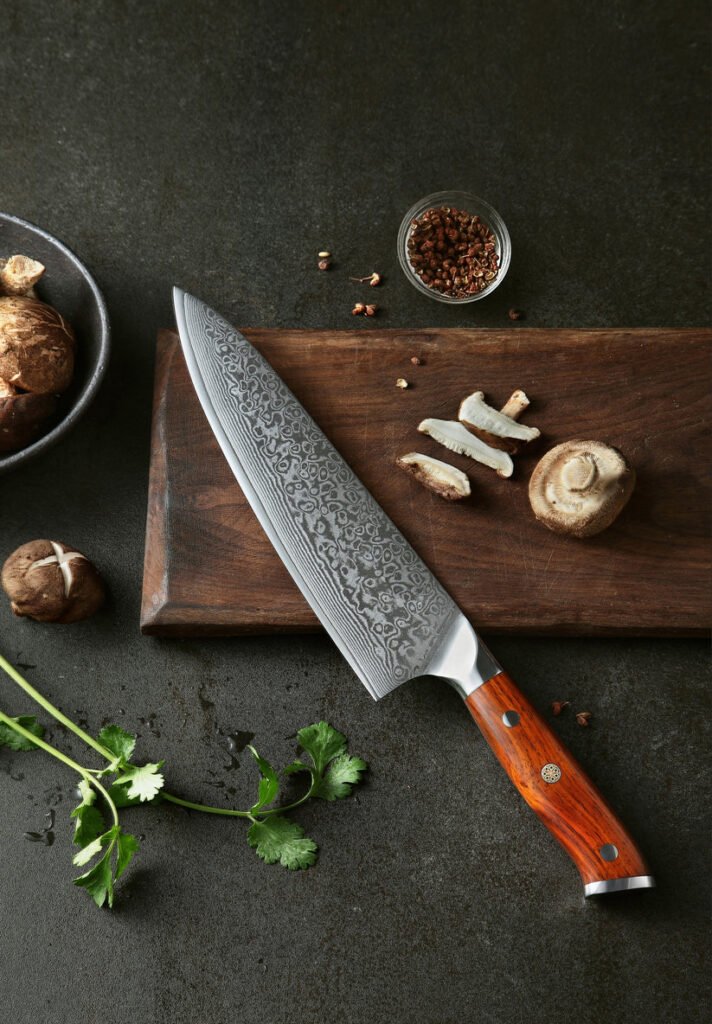
Premium knives use powdered steels like MAGNACUT or ELMAX for extreme performance. Damascus steel, often layered with a high-carbon core, provides aesthetic appeal and excellent cutting ability. Rebex’s Damascus line reaches ~62 HRC, offering excellent edge retention with a decorative finish.
Heat Treatment: The Key to Performance
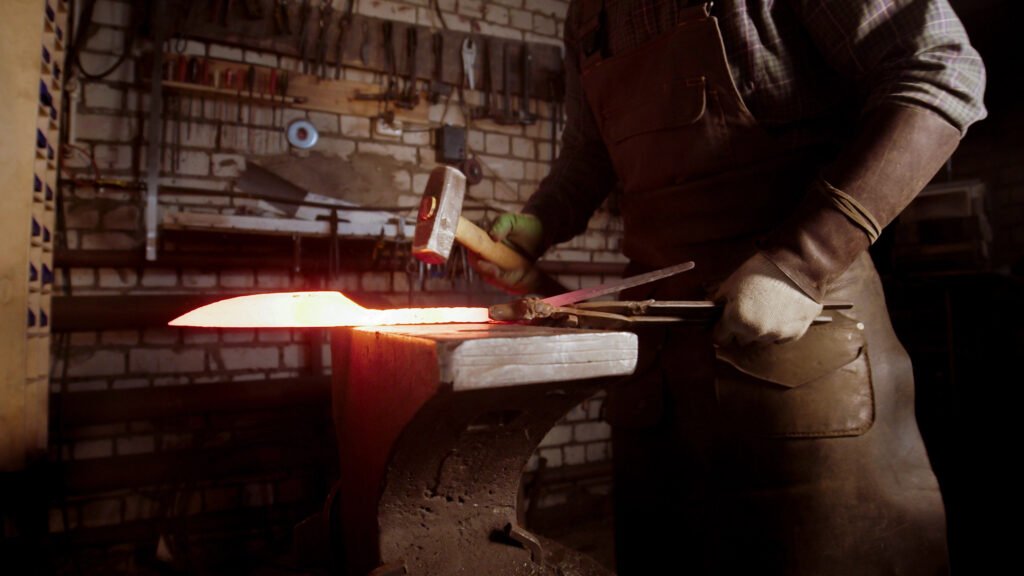
Steel alone doesn’t determine a knife’s quality—heat treatment does. This process fine-tunes hardness and toughness:
- Annealing: Softens the steel for shaping.
- Austenitizing: High-heat phase transforming steel into a workable form.
- Quenching: Rapid cooling (usually in oil) to harden the blade.
- Tempering: Reheats to relieve brittleness, achieving 58–63 HRC.
- Optional Cryogenic Treatment: Deep freezing for structural refinement (common in high-end knives).
Why It Matters: A poorly heat-treated blade—too soft or too brittle—won’t perform well. Top-tier knives have meticulously controlled heat treatment for longevity and edge retention.
Forging vs. Stamping: How Knives Are Made
- Forged Knives: Heated and hammered for strength; often full-tang and well-balanced (e.g., Wüsthof, Zwilling).
- Stamped Knives: Cut from sheet steel, easier to mass-produce. While often budget-friendly, modern stamped knives (like those from Rebex) can be high-quality when paired with good materials and heat treatment.
Rebex Cutlery: A Balanced Approach to Quality and Affordability
Rebex offers two main steel lines:
- 1.4116 German Steel: Easy to sharpen, corrosion-resistant, around 56 HRC. Great for casual cooks.
- Damascus Steel (67-layer): High-carbon core with layered finish, ~62 HRC for better edge retention.
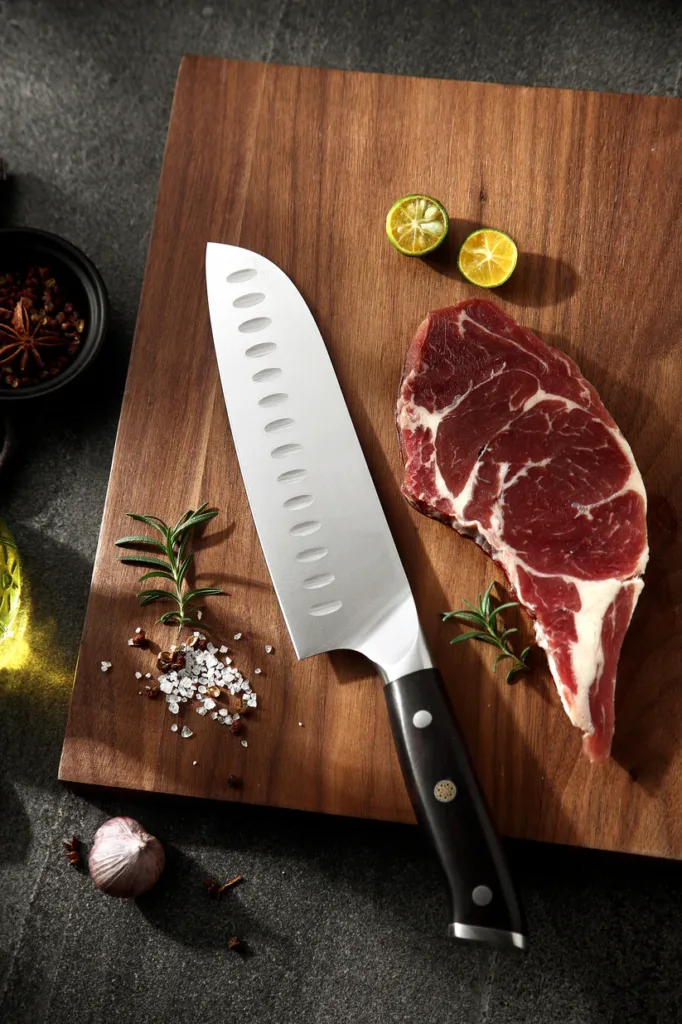
Cheap vs. High-Quality Chef Knives: What Sets Them Apart
| Factor | Cheap Knives | Superior Knives |
|---|---|---|
| Steel Quality | Low-grade stainless | High-carbon or alloy steels |
| Heat Treatment | Inconsistent | Precision-controlled |
| Manufacturing | Often stamped | Forged or precision-stamped |
| Edge Retention | Dulls quickly | Long-lasting sharpness |
| Ergonomics | Basic handles | Balanced, comfort-focused designs |
| Craftsmanship | Mass-produced | Hand-finished or tightly controlled |
Why It Matters: A high-quality knife performs better, lasts longer, and is safer to use. Brands like Rebex strike a balance between quality materials and accessible pricing, appealing to both home cooks and culinary enthusiasts.
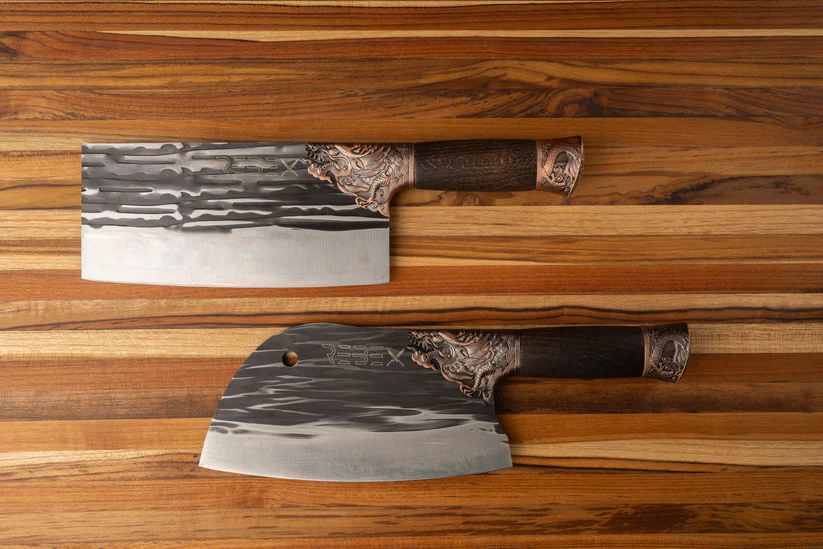
Choosing and Caring for Your Knife
To Choose Wisely:
- Steel Type: Carbon for sharpness, stainless for ease.
- Hardness: 56–58 HRC for home use; 60+ HRC for pros.
- Construction: Full-tang knives offer better durability.
- Brand Trust: Look for warranties and quality control.
To Maintain:
- Hone regularly with a honing steel
- Sharpen with a whetstone.
- Hand wash and dry immediately.
- Store in a knife block or magnetic strip.
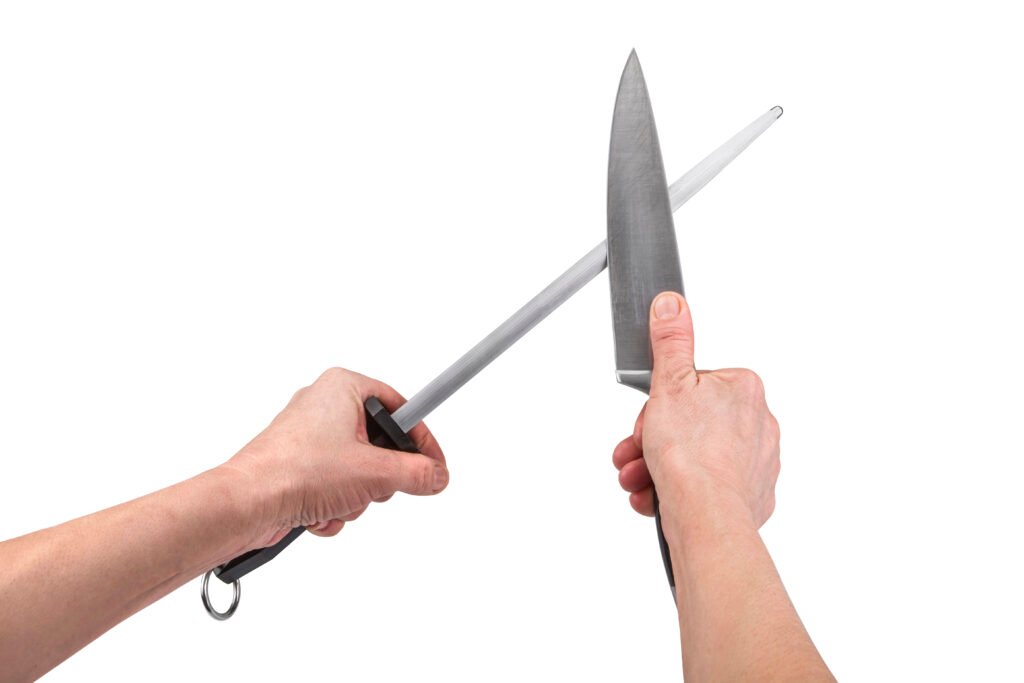
Conclusion: A Blade Worth Your Investment
A great chef knife is forged through science, tradition, and precision. From steel selection to heat treatment and final polishing, every detail impacts how it performs in your kitchen. Whether you opt for a Rebex Damascus blade or a Wüsthof classic, understanding what makes a great knife gives you the power to choose wisely—and slice confidently.


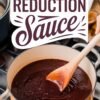

Add comment